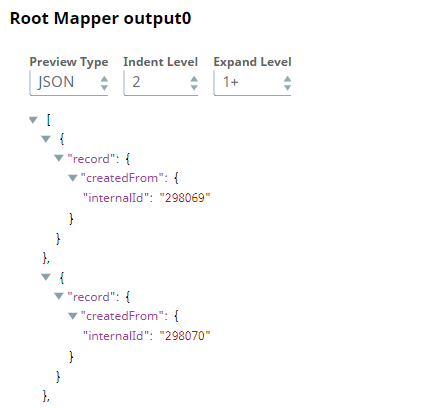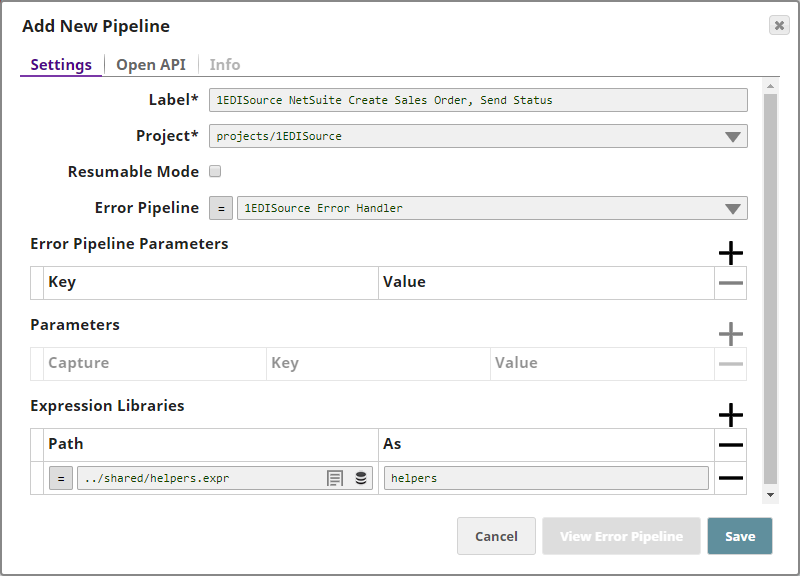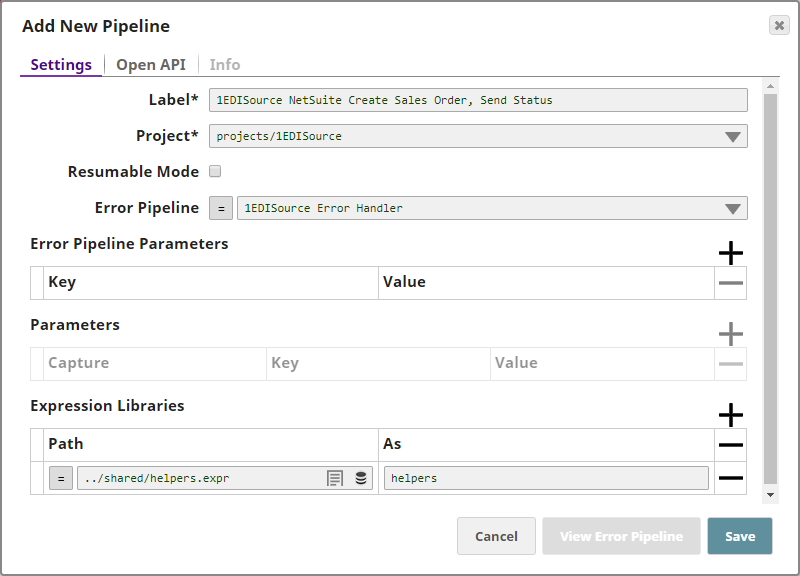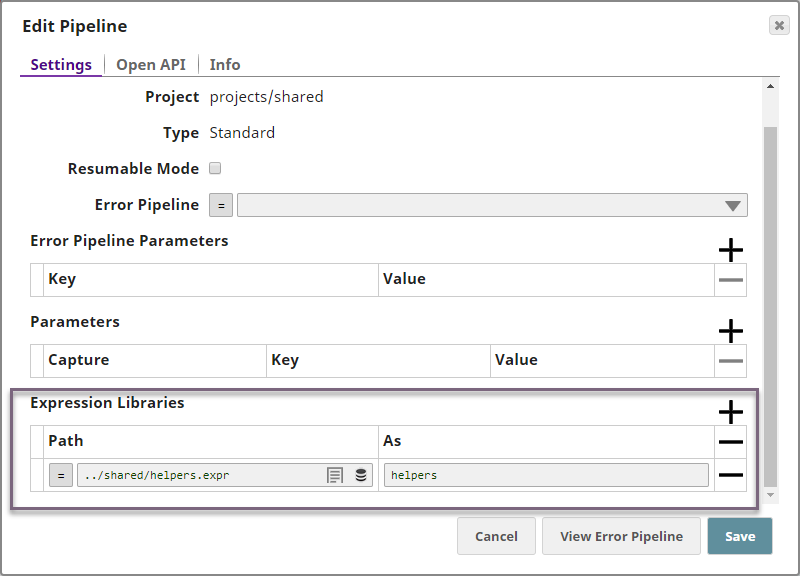...
The base reference type, salesOrder, and the Internal IDs are sent to the NetSuite Get Snap labelled Get Sales Order.
This enables us to retrieve the order's current state.
...
Item fulfillment in any business case is a manual process. A sales order is deemed fulfilled only after the merchandise/product/service has been shipped for delivery. In our use case, we simulate that process by marking the sales orders as fulfilled or "_shipped". This part is carried out by the Snaps labelled Root Mapper, Item Mapper, and Create Item Fulfillment. All these Snaps work together to provide the Internal ID.
The output from the Root Mapper Snap is passed to the NetSuite Create Snap labelled Create Invoice where the invoices are created.
...
From the above output we retrieve only the base reference, type, and Internal ID using the Mapper Snap, Get Invoice Mapper.
We do this since the base reference and Internal ID are all we need to retrieve the invoice's details from NetSuite using the NetSuite Get Snap labelled Get Invoice. This Snap retrieves the invoice's details. From these details we retrieve the Control ID using the Mapper Snap labelled Invoice Mapper.
At this juncture, we have all the information we need from NetSuite to communicate to the EDI gateway that the sales order sent from it has been fulfilled. To do so, we perform two operations:
...
- Download the Solution Pipeline and Expression Library.
- Login to SnapLogic and click the button in SnapLogic Designer.
- Select the Pipeline from your local Drive.
- Edit the Pipeline's details such as Label.
Import the expression library in the Expression Libraries section.
- Click Save.
- Configure the accounts in the Snaps as appropriate.
- Validate and execute the Pipeline.
...









